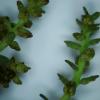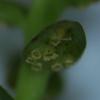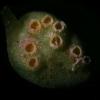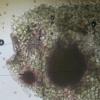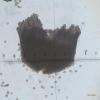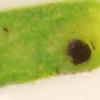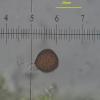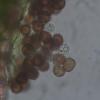
14-11-2025 16:26
 Marian Jagers
Marian Jagers
Hello everyone, On dead wood of Cytisus scoparius

17-11-2025 21:46
Philippe PELLICIERBonjour,Récolté sur bois pourrissant de feuillu

20-11-2025 14:14
Mick PeerdemanFound on the leaves of 'Juglans regia' in the Neth

20-11-2025 13:07
Mick PeerdemanIn January i found these black markings on the dea

20-11-2025 12:38
Mick PeerdemanDear all,Last week i stumbled upon a leaf of ilex

19-11-2025 23:21
 carl van den broeck
carl van den broeck
Dear guestIn Waardamme, Belgium, I found dozens of

19-11-2025 20:51
 Andreas Millinger
Andreas Millinger
Good evening,found this species on a felled trunk

19-11-2025 13:04
 Bruno Coué
Bruno Coué
Bonjour,je sollicite votre avis pour la récote
 Hello, I have found plants of Euphorbia peplus and E. exigua infected with a rust which I believe it is Melampsora euphorbiae (confirmation would be kindly appreciated). I was amazed because it caused some hypertrophy on the host plants, namely more suculent leaves and stem, and leaves getting more separated and distant from each other. I do not know how common is this because the images I see on the net of the host plants with this fungus do not show a great deal of hypertrophy.
Hello, I have found plants of Euphorbia peplus and E. exigua infected with a rust which I believe it is Melampsora euphorbiae (confirmation would be kindly appreciated). I was amazed because it caused some hypertrophy on the host plants, namely more suculent leaves and stem, and leaves getting more separated and distant from each other. I do not know how common is this because the images I see on the net of the host plants with this fungus do not show a great deal of hypertrophy. The crater-like openings in the epidermis of the leaves are stunning under the microscope :-)
[EDIT]:
It was suggested that this corresponds better to Uromyces sp. due to the presence of aecia with pseudoperidium (Caeoma-aecia) that Melampsora euphorbiae usally lacks. See replies below.




no - Melampsora euphorbiae forms aecia (Caeoma type), the autoecical rust forms all 4(5) develompment stages on one host - compare for instance:
https://www.phytoparasiten.de/melampsora-euphorbiae-4/
Regards, Lothar



I will correct the title. I got a suggestion by Fabian Ernst of Uromyces tuberculosus which is cited to grow on E. peplus and E. exigua. I will seek further knowledge, but it is nice to learn new stuff here :-)
THANKS/

e.g.
https://bladmineerders.nl/parasites/fungi/dikarya/basidiomycota/pucciniomycotina/pucciniomycetes/pucciniales/pucciniales-incertae-sedis/aecidium/aecidium-euphorbiae/
I have an uprooted plant and two more, I will follow up. One of the plants is in its advanced state of infection so I will investigate further later on.

From what I read and learnt today, this would make my fungus Uromyces tuberculatus on the principle that Aecidium lacks completely the teliospore formation in its life cycle whereas U. tuberculatus grows specifically on E. exigua and forms verrucose teliospores.
However reading the host reaction (galling) of Aecidium euphorbiae on Euphorbia exigua, the symptms match perfectly to what I saw, thickened stems and leaves, erect growth, hypertrophy. Then, the same source (weblink above) says that U. tuberculatus rarely (does not) effects the host.
This makes things confusing, so unless we have double infection by two rust fungi (I think we can eliminate this possibility) the options are:
1. Uromyces tuberculatus but making an abnormal hypertropic reaction of the host OR
2. Aecidum euphorbiae but exceptionally is making teliospores on my sample.
I dont know what to choose between the two evils but 1 would be more realistic.


Yes we can conclude that this is Uromyces tuberculatus and that IT EFFECTS the host as explained above.
Great!


